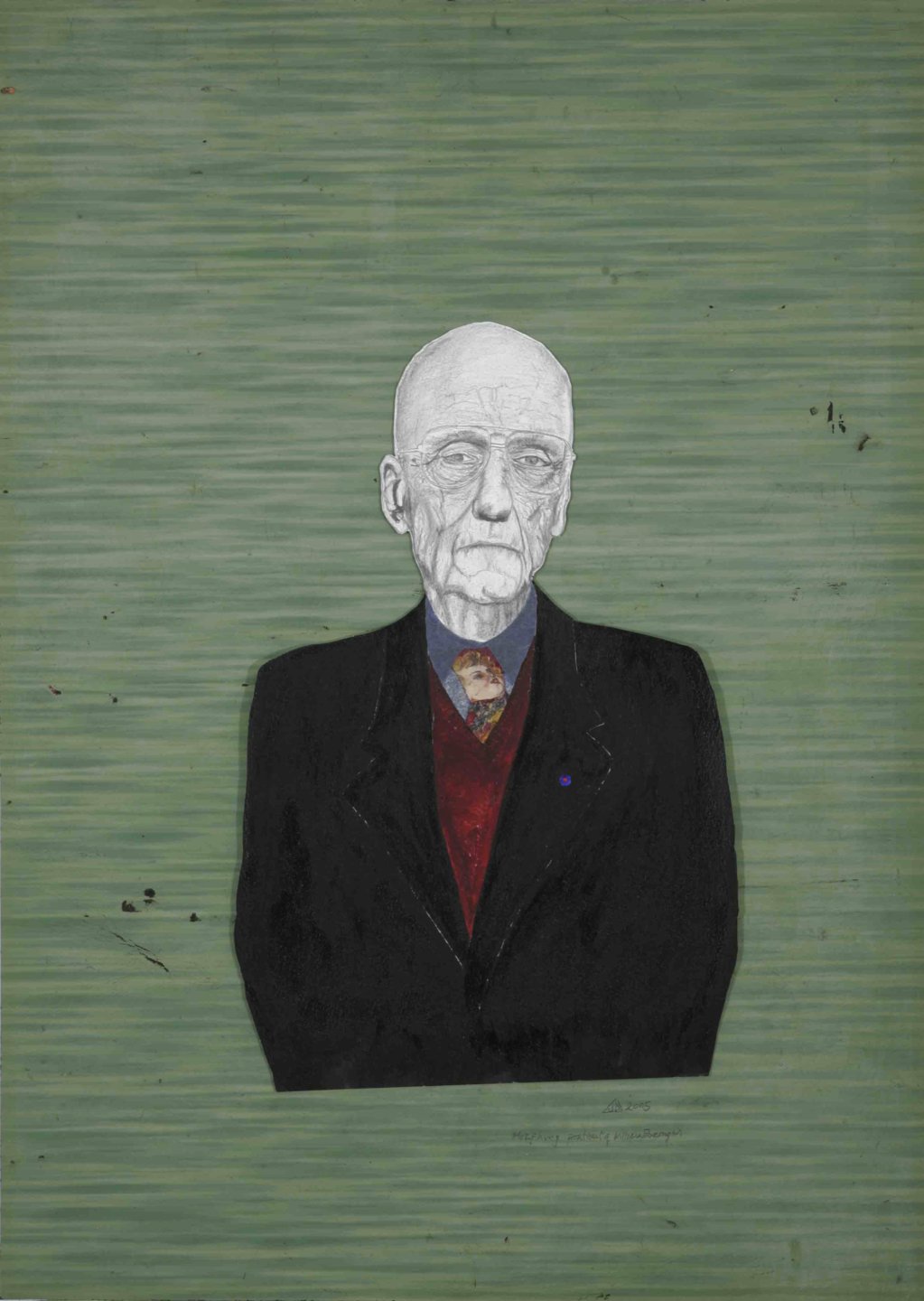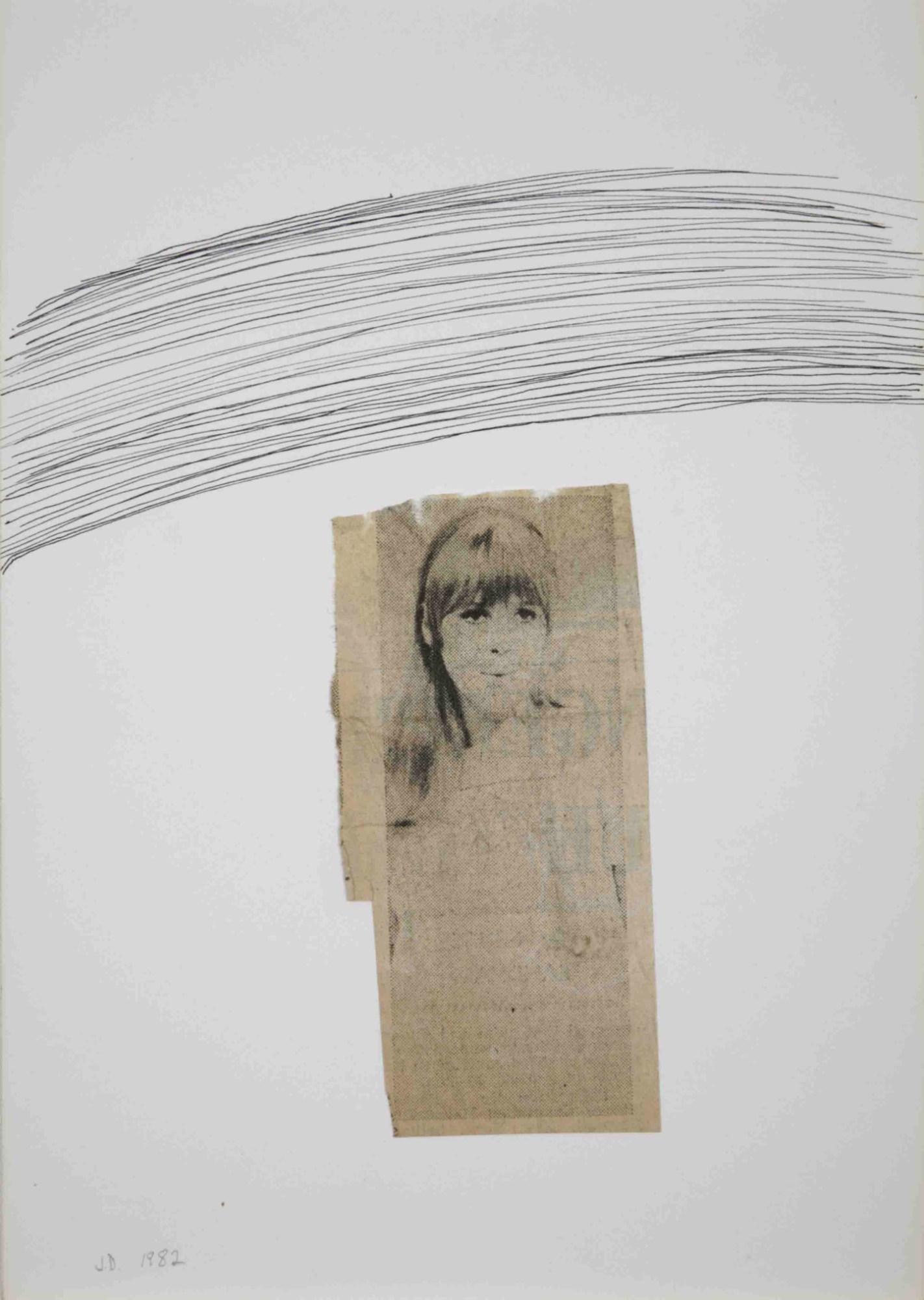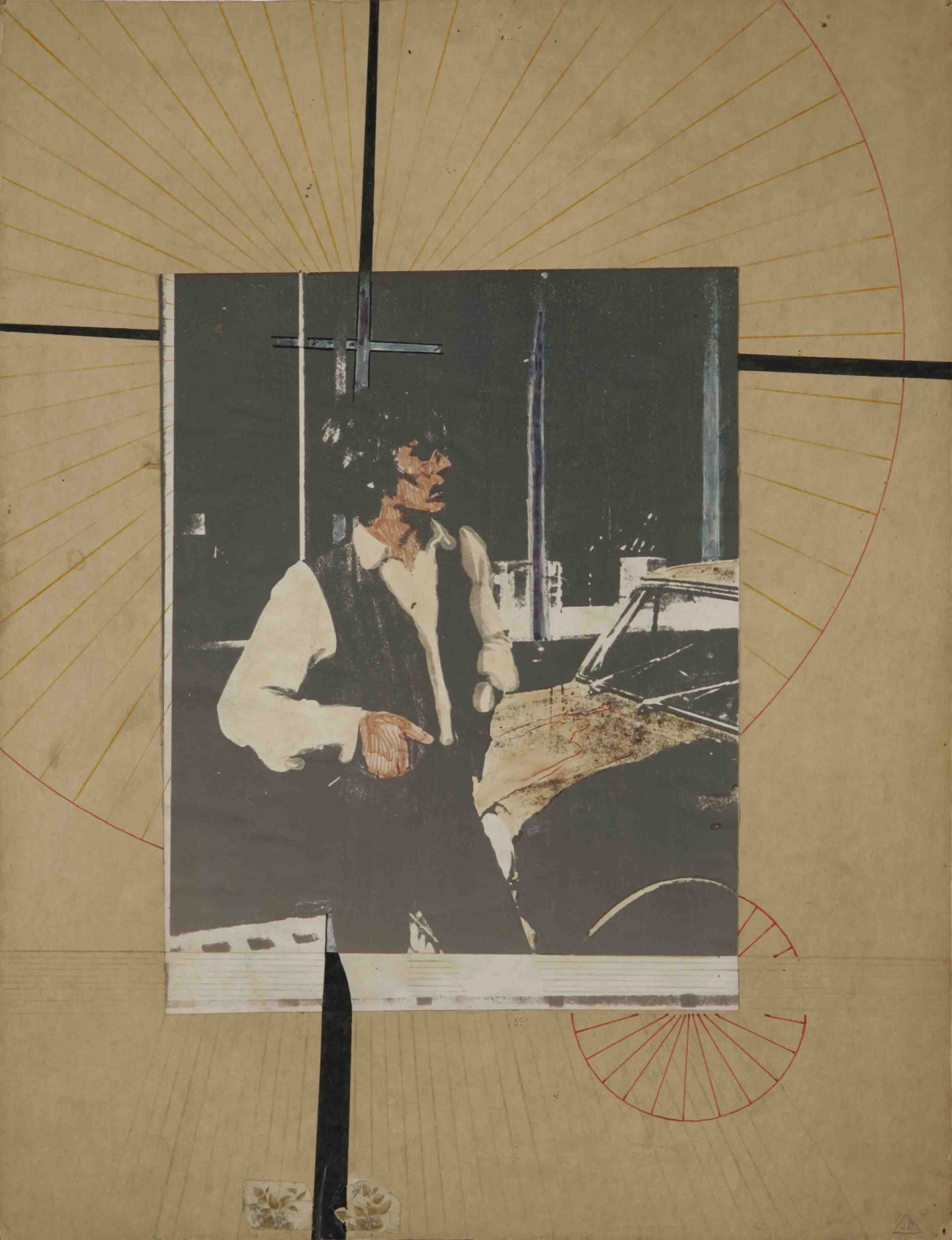“Would you like some tea?” Walking into British artist John Dunbar’s studio is like walking into a surrealist assemblage. The artist, most famous for running Swinging London’s hippest art gallery Indica, clearly has an eye for detail. Countless objects line the walls in unusual arrangements – antique workmen’s tools and tin tobacco boxes, medication bottles and shattered ceramic heads. A model hand peeps out from an antique foot. I point at a set of long-stemmed hash pipes with ornate bowls. “I worked on these pipes with my friend Colin [the British Pop artist Colin Self]. He designed the heads.”
John Dunbar is an artist and obsessive documentarian whose surrealist, Dada-inflected collages, drawings and sculptures have just been exhibited at London’s England & Co gallery. The exhibition, titled Remember When Today Was Tomorrow, also marks the first time his legendary notebooks have been on display. The title comes from a line scrawled on the wall of Dunbar’s apartment in 67, part of a “psychedelic mural” that went on to accumulate the scribbles of visitors and friends including Paul McCartney, John Lennon and the cream of the 60s rock scene. The diaries are pointed out to me, neatly packed in rows according to date. Vellum notebooks full of hand-scrawled notes, automatic writing and collage.
When I meet him, Dunbar is just getting ready for the show, and working over a large image of his busy studio that will hang on the walls of England & Co. Dunbar is best known as the co-founder of Indica, but he’s also been a key mover-and-shaker in the art and rock ‘n’ roll world for many years, alongside quietly working away at his art. He was born in Mexico to the film-maker and producer Robert Dunbar, and a Russian émigré mother, Tatiana. According to The Guardian, “the film director Sergei Eisenstein would frequently dine at the Dunbars’ rat-infested flat and, on one occasion, waited in the dark of the kitchen to catch a rodent, which he proudly presented on a covered dish.”

Dunbar was a Cambridge art student when he met the singer Marianne Faithfull at a Cambridge ball. As Faithfull recalls in her autobiography, he “wasn’t actually at the ball, he was too cool for that. He would never have been caught dead at a bourgeois event such as a ball.” They met on a staircase, on route to a party. She was seventeen and he was twenty. They fell in love and were married on the 6th May 1965, with Peter Asher (of pop group Peter and Gordon) as the best man and spending their honeymoon in Paris with the Beats.
“We wanted to change the world,” Dunbar explains. According to Faithfull, it was in 1963 that the Ur myth of ‘Swinging London’ was concocted in an espresso bar in Chelsea. John, Paolo Leone and Barry Miles put their heads together to hatch a plan to make London swing. At once they “began to build the walls of our New Jerusalem… Free love, psychedelic drugs, fashion, Zen, Nietzsche, tribal trinkets, customised Existentialism, hedonism and rock ‘n’ roll. And lo and behold, before too long there was a definite buzz going on.”
In 65, Dunbar set up the Indica gallery (taken from Cannabis indica) with author Barry Miles and Asher. Paul McCartney put up shelves. “We felt that we needed to do something that went against the stuffiness of the existing galleries, but we didn’t really know what we were doing. I was very young and quite innocent about what was going on,” he observed, in interview in the Tate magazine.

Indica only ran for a couple of years, and yet showed the work of important kinetic and conceptual artists, including Mark Boyle, Soto, de Marco, Julio Le Parc, Liliane Lijn, Takis and notably Yoko Ono, when he organised Unfinished Paintings and Objects, Yoko Ono’s first solo exhibition outside the USA and Japan, and described by Dunbar as “the first full-on conceptual art show to appear in London”. Very recently, Yoko privately paid the England & Co gallery a visit. She loved it.
Alongside Indica, there were a number of small avant-garde galleries in London, including Robert Fraser’s. Was there any competitiveness? “No. We were friends. We were all in it together. There was a great spirit of collaboration in the air.” In the exhibition, a pair of mint green phones decorated with old photographs on the dials are one of several tributes to the notorious and flamboyant art dealer, Robert Fraser. Dunbar gave them to him sometime in the late 60s. The show’s curators found them on the studio floor, separated and gathering dust.
Dunbar opens up a cupboard filled with his “many little books” – for over fifty years Dunbar has continued to draw or write in his notebooks practically every day. “I always carry a notebook around in my pocket.” I turn pages of pressed leaves, receipts, a drawing of a woman spotted at a café. Dunbar calls them “visual samplings” or “scratchings”. “I carry them on me in case anyone needed something to draw on. And so, I have a couple of sketches by Colin and John [Lennon].”

His diaries are just one aspect of a practise that deals in minute detail: he calls himself “a miniaturist.”
I ask Dunbar what his influences are. “What an impossible question. I know many people who make art, and so I guess their work has influenced me.” The early drawings of Lucian Freud and Colin Self (part of Dunbar’s circle), automatic drawing, psychedelic visions, Dada, and Surrealism carry potent sway.
LSD is also a key influence in Dunbar’s work, drawn from his legendary trips on Owsley Stanley’s famous acid, or his many chemical misadventures with John Lennon. Dunbar’s first trip was at Lennox Gardens in the company of David Courts. Several of Dunbar’s ‘acid’ drawings appear in the exhibition. A handful of colourful ink notations penned in journals during “acidy afternoons” in the late 60s also bear the marks of Dunbar’s experimenting.
Dunbar’s art and journals reveal the rich workings of a life well lived and closely studied. I leave the studio through a narrow staircase lined with photographs and hanging statues. Along the stairs, I can hear a soft voice on the phone discussing the night’s plans at the Groucho club.
Credits
Text Sophia Satchell-Baeza
Images © John Dunbar. Courtesy England & Co gallery
